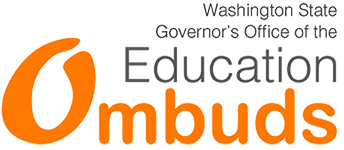Recorded Webinars Addressing Supports for Students in Foster Care
- Fostering Together & OEO Webinar Series: Part 1 of 4 - Navigating IEPs and 504 Plans
- Fostering Together & OEO Webinar Series: Part 2 of 4 - Troubleshooting Behavior, Attendance and Academics
- Fostering Together & OEO Webinar Series: Part 3 of 4 - Strategies and Tools for Resolving Disagreements with Schools
- Fostering Together & OEO Webinar Series: Part 4 of 4 - Ask an Ombuds
- School Stability for Students in Foster Care Webinar / Getting Them Ready Foster Care PowerPoint from Webinar
Opportunity Gap Background
In 2009, the Educational Opportunity Gap Oversight and Accountability Committee (EOGOAC) was established to recommend policies and strategies to close the achievement gap for students throughout the state. The EOGOAC has members representing the legislature, various state agencies, and diverse communities of color.
Fourth Substitute HB 1541, which implements strategies to close the educational opportunity gap based on the recommendations of the EOGOAC, was passed by legislators during the 2016 legislative session.
Summary of HB 1541 issue areas that address the Opportunity Gap, based on recommendations by the Educational Opportunity Gap Oversight and Accountability Committee (EOGOAC): Implementation of HB 1541 (EOGOAC)
Washington public schools enrolled over a million children across the state last year. About 46% of those students were eligible for free or reduced lunch; more than 20% came from families with a first language other than English; nearly 16% were identified as having a disability; and nearly 41% were children of color. We are experiencing the greatest racial and ethnic changes in American history to-date: there is no question that we are a profoundly multiracial and multicultural society. And yet, across the nation and in our state, there are neighborhoods and schools that remain segregated by poverty and race. This segregation perpetuates gaps in opportunity and outcomes for our students. It is notable that it has been 60 years since the decision in Brown v Board of Education and while the legal obstacles to integration in our public schools are gone, the social obstacles persist and confound us. Statewide, about 23% of our students do not make it to graduation. Dropout is not a term that adequately describes the reasons and situations that lead young people to decide they can't finish school.
It is important to understand why our schools fail to graduate some young people despite historic advances in boosting graduation rates. In our current system, students' race, ethnicity, socio-economic status, and disability status become predictors of whether they are more or less likely to drop out or be pushed out of school. Most schools with high concentrations of students of color are located in high-poverty neighborhoods, doubling the risk factors for their students. One of the student groups most affected by low graduation rates from our public schools is our Native American students. We know that in some districts, African American boys are between two and five times more likely to be suspended or expelled than their White peers. We also know that suspended students are less likely to graduate on time and more likely to be suspended again. They are also more likely to be brought into contact with the juvenile justice system, where we have disproportionately high numbers of youth of color.
The Opportunity Gap is evident on nearly every indicator of child well-being - from health issues to neighborhood safety to educational outcomes. Our systems leave children who are living in foster care or experiencing homelessness or poverty lagging behind their more economically-secure peers and faring worse in all areas. Last year, more than 30,000 students in Washington public schools experienced homelessness; in 2012-2013, only 45.1% of students who experienced homelessness, and only 36.6% of students in foster care graduated on time. We need new strategies to reach and provide meaningful educational supports to children whose lives are complicated by unstable housing and poverty. Students with disabilities experience similar opportunity gaps. Nearly 16% of all students in our state currently receive educational supports to address adverse impacts of a disability through Individualized Education Plans (IEPs) and Section 504 Plans. In some districts, students with an IEP were more than 2 times more likely to be suspended or expelled than their non-disabled peers; they were also less likely to graduate, and less likely to be employed or enrolled in a postsecondary program one year after leaving school. We need to build capacity for educators to provide inclusive, high-fidelity, evidence-based classroom practices so that a student's gaps in skills can be addressed early and quickly, and without unnecessary stigmatization or segregation.
